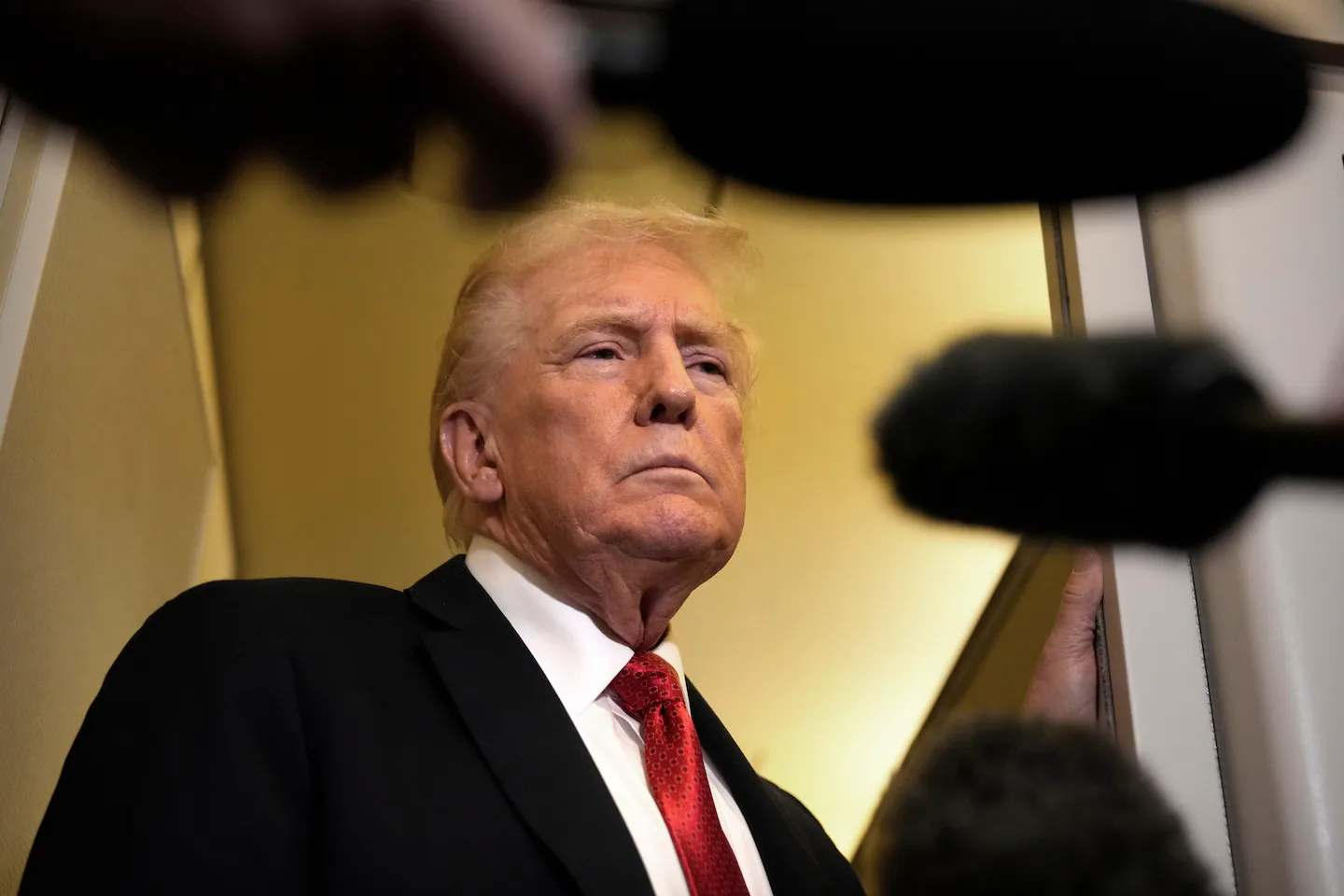Copyright Anchorage Daily News

Nearly one week since a rash of Pentagon journalists turned in their press credentials after refusing to sign a new restrictive press policy, the Defense Department announced a “new media” press corps, largely hailing from right-wing outlets. The 60 people from various news organizations represent, “a broad spectrum of new media outlets and independent journalists,” Pentagon spokesperson Sean Parnell wrote in a statement on X, adding that all of the publications agreed to the agency’s press policy. According to a draft of the announcement obtained by The Washington Post ahead of Parnell’s tweet, the coalition of signatories includes the cable network Real America’s Voice, streaming service Lindell TV (started by MyPillow CEO and Trump ally Mike Lindell), the websites the Gateway Pundit, the Post Millennial, Human Events, the National Pulse, and RedState. It also includes Turning Point USA’s media brand Frontlines, as well as influencer Tim Pool’s Timcast, and a Substack-based newsletter called Washington Reporter. The memo said that “many independent journalists” also signed, but did not specify who they were. The Defense Department’s policy blocks journalists from soliciting information the department has not authorized for release - even unclassified details, a major shift in press outreach from the organization. Parnell said that 26 people from 18 outlets signed the original document, including OAN, the Federalist, and the Epoch Times. “New media outlets and independent journalists have created the formula to circumvent the lies of the mainstream media and get real news directly to the American people,” Parnell wrote on X. “Their reach and impact collectively are far more effective and balanced than the self-righteous media who chose to self-deport from the Pentagon.” The Defense Department declined to offer additional comment or give the full list of signatories. Timcast, the National Pulse, and the Washington Reporter all confirmed to The Post that they had signed the policy. The Post Millennial, Just the News, Human Events, TPUSA Frontlines, Lindell TV and the Gateway Pundit all confirmed on X. The introduction of a “new media” press corps follows a similar move earlier this year by the White House, which has held special briefings for influencers, upstart news outfits, and other nontraditional media. It has also had a new media seat in the briefing room, sometimes occupied by newer yet more mainstream outlets like Semafor and NOTUS. Trump administration officials have defended their “new media” shift by suggesting they want to reach a broader and more diverse American audience, but many of the newest press corps entrants are small partisan outlets with low online engagement. Except for the Gateway Pundit and RedState, the new entrants do not rank among the top 20 right-wing websites in the U.S., according to estimates from the online-data firm Similarweb cited by the political-content tracker TheRighting. The Gateway Pundit had 25 million visits in August to its website while RedState had fewer than 10 million, the estimates said; the New York Times, by comparison, had nearly 600 million. The Defense Department has made previous attempts to boost less-traditional media outlets, in February removing the New York Times and NPR from their dedicated office spaces in February in favor of the New York Post, Breitbart News, OAN and a left-wing outlet, HuffPost. The resident Pentagon press corps, as it’s known, are the journalists - reporters, producers, photographers, videographers - who cover the Pentagon on a day-to-day basis. Of the Pentagon’s new press corps, only OAN was a regular presence before last week’s walkout. But there’s little unity in conservative media over this policy. Fox News, Defense Secretary Pete Hegseth’s former employer, joined ABC, CBS, NBC and CNN in announcing it would not agrnew requirements,” the joint statement read. “The policy is without precedent and threatens core journalistic protections. ” Other conservative outlets Newsmax, the Washington Times and the Washington Examiner - all of which have reporters who regularly cover the Pentagon from the building - also declined to sign, as did the Daily Caller. The Post previously reported that only 15 people had signed the media policy as of Oct. 16, the day after the walkout. That list included OAN, the Federalist, and the Epoch Times, as well as a smattering of foreign outlets, freelancers and little-known independent journalists. The outlets that have stepped in to take the old guard’s place are relatively scrappy and less well-known, and some have trafficked in conspiracy theories. Tim Pool, CEO of Timcast, wrote in a statement that his plan is to have the outlet’s White House correspondent attend any press briefings the Pentagon may hold. “Our access is mostly for general inquiries and interviews,” Pool wrote. “Should a story, for some reason, end up in our laps that may put us at odds with the Pentagon’s press policy, we will always prioritize the public’s right to know and transparency. However, given that we are not investigative reporters, we don’t expect to find ourselves in these circumstances.” Pool, a popular YouTuber, previously worked for a group called Tenet Media that the Justice Department said in an indictment was operated by Russian government-funded RT. He previously posted on X, “I just read the DoW press memo and I dont understand wtf the media is complaining about,” referencing the Department of War, the Trump administration’s rebranding of the Defense Department. Gateway Pundit, a popular right-wing website, filed for bankruptcy after facing a slew of lawsuits over its content. It settled one high-profile defamation lawsuit filed by Georgia election workers in 2024. Human Events is the small right-wing news blog edited by Jack Posobiec, a right-wing podcaster who was invited to travel with Hegseth on an overseas trip to Europe earlier this year, though he did not attend. Posobiec recently criticized reporters for yelling questions at President Donald Trump and Russian President Vladimir Putin at an August summit. “Maybe I was raised a little differently,” he told Stephen K. Bannon on a podcast. The National Pulse’s editor in chief, Raheem Kassam, confirmed that the outlet had signed the press policy, but declined to share details about future coverage. “It is correct,” Kassam wrote. “Much like The Washington Post, we do not intend to divulge our editorial decisions to external parties.” Matthew Foldi, editor in chief of the Washington Reporter, confirmed that his outlet had raised its hand to sign the press policy. “The former press corps disgraced itself on a more or less daily basis with what they covered - and what they didn’t cover - and we at the Washington Reporter are eager to pick up their slack,” he told The Post. Pentagon press secretary Kingsley Wilson sat for an interview with Turning Point USA’s Frontlines channel last week. Turning Point USA was started by Charlie Kirk, the right-wing influencer killed at an event in Utah last month. The interviewer, Monica Paige, had asked Wilson to clear up any “misconceptions” about the policy, a sympathetic setup for the Pentagon official: “What are maybe the mainstream media reporters getting wrong about this new policy?” Paige asked. Wilson then made false claims that when Pentagon reporters could “go wherever they wanted in the building,” and said that the policy comprises “reasonable, common-sense asks.”



